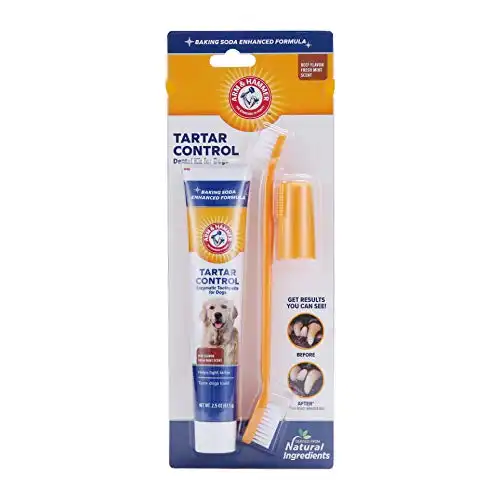How to Brush Small Dogs Teeth – Helpful Tips
If you’re a pet parent, you should know the benefits of brushing your dogs’ teeth. It’s not only beneficial for your olfactory senses but also prevents plaque and tartar accumulation that may not only cause tooth loss but also cause severe infections in other parts of the body.
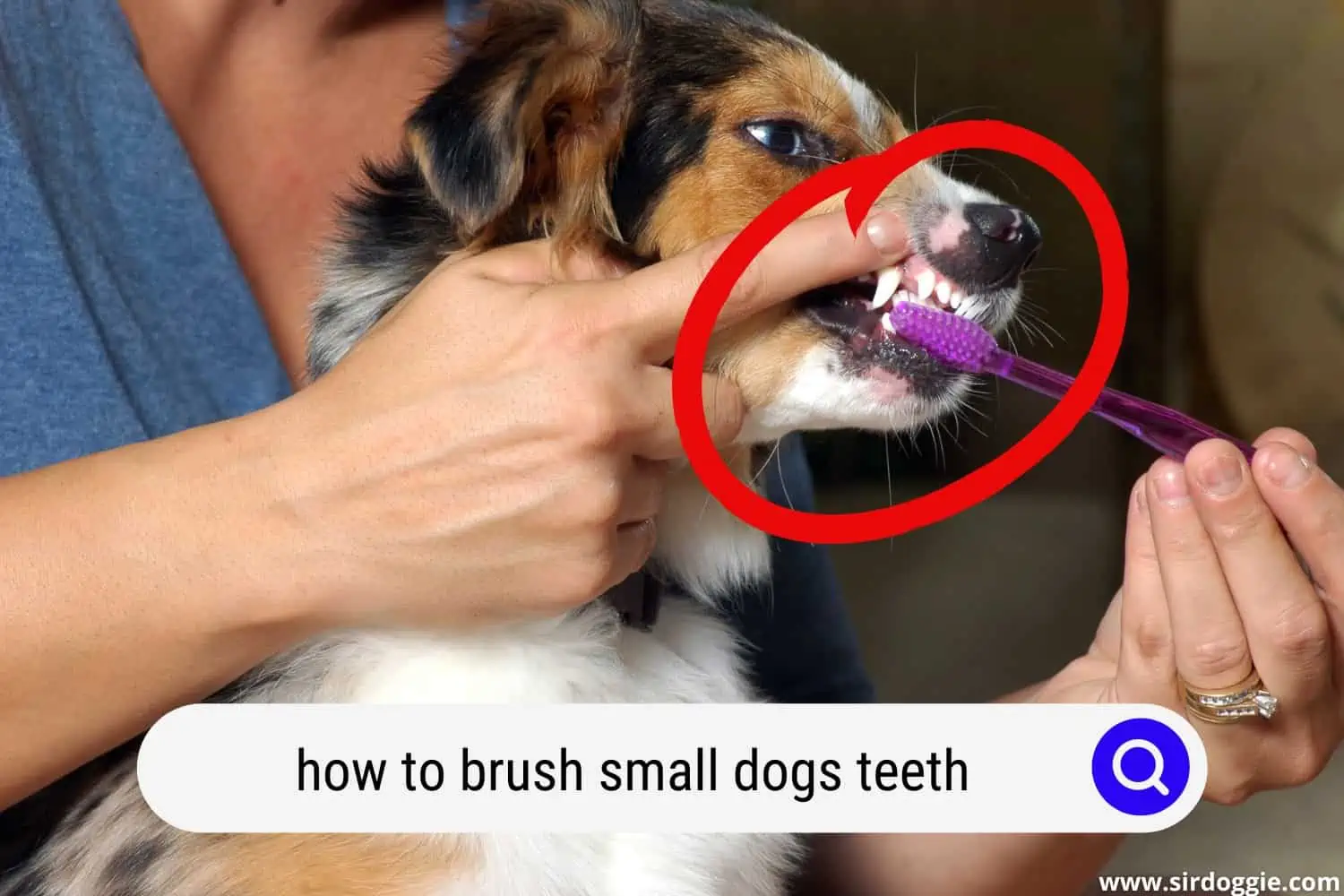
But do you know the right way to brush a small dog’s teeth correctly?
How should you brush small dogs’ teeth? Cleaning a small dog’s teeth is the same as cleaning a big dog’s teeth.
The only difference is that you’ll need a smaller brush, and it will probably take more time if the dog is not used to having its teeth brushed.
Here’s how to clean your small dog’s teeth:
- Get the right equipment
- Prepare your dog for what’s coming
- Open the dog’s mouth and begin brushing
- Give your dog a healthy treat
- Repeat
Most pet parents are scared of brushing their small dogs’ teeth because they are afraid of injuring the dog’s gums or are uncertain of whether or not the dog is ready.
The best time to start dental care practices is when your dog is young. Puppies have an easier time getting accustomed to changes compared to mature dogs, so start as soon as possible!
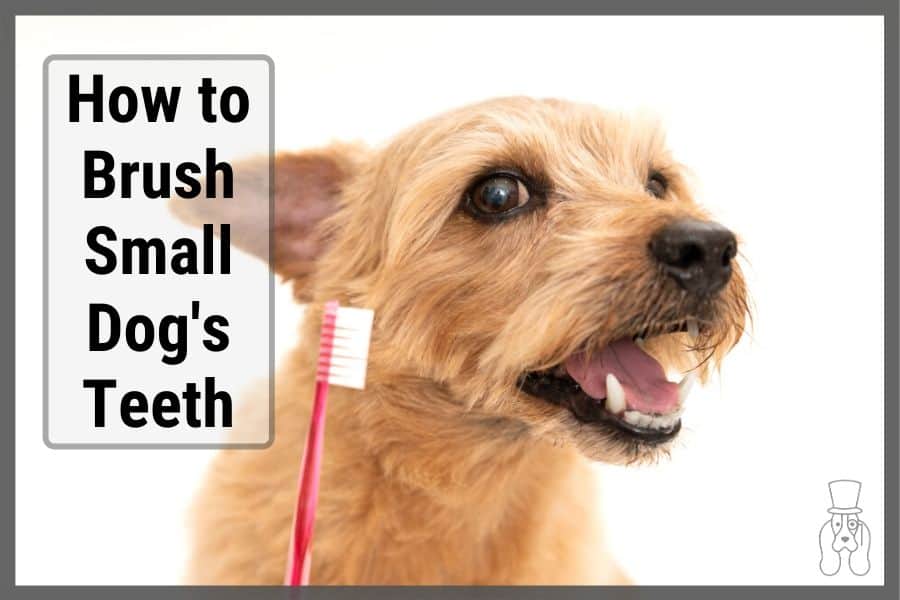
Related Reading: Do I Really Need To Brush My Dogs Teeth?
5 Steps For Brushing Your Small Dogs’ Teeth
So you’re ready to get your small dog on a regular tooth cleaning routine but don’t know where to start? You’re not alone.
Most new and even experienced pet parents have trouble cleaning small dogs’ teeth. But don’t worry. With our detailed guide, it should be a walk in the park – or at least a bit easier than you think.
Step 1: Get the Right Equipment
The first step in brushing a small dog’s teeth is getting the right equipment. The first thing you need to get is a toothbrush. Do not use an adult human’s toothbrush.
Banfield Pet Hospital says it’s best to buy a dog toothbrush or use a Kids Toothbrush with soft bristles because it will fit easily into the dog’s mouth.
Many small dog parents recommend finger brushes because they fit easily into the mouth, and they’re very easy to use. Consider the following recommendations.
When it comes to toothpaste, resist the urge to use your own toothpaste, baking soda, or any other household items because they may be toxic to your dog or cause an unwanted reaction.
Instead, purchase a specialized dog’s toothpaste. You can choose from a plethora of flavor options ranging from chicken and vanilla to poultry flavor. Choose a flavor you believe your dog will love.
Step 2: Prepare Your Dog for What’s Coming
Once you have everything you need, avoid starting the process without preparing your dog. If your doggie really hates having their teeth brushed and every attempt ends in disaster, then check out our post on brushing a Dog’s Teeth That Hates Being Brushed.
You need to ensure the dog is comfortable and calm before you start brushing its teeth. Try brushing your dog’s teeth when they’re a little worn out, like after a long walk or playtime, because they’re tired and less likely to resist.
- Begin by getting the dog used to your hands in their mouth by frequently touching their mouth and muzzle with your fingers.
- Next, place a small amount of toothpaste on your finger and allow the dog to lick it off. Doing this will let you know whether the dog likes the taste and will make it easier for the dog to accept it when it’s on a toothbrush.
- Afterward, show the toothbrush to the dog and give him time to examine it. Allow the dog to sniff and inspect the toothbrush before you proceed to the next step.
Step 3: Open the Dog’s Mouth and Begin Brushing
According to Wag Walking, the best way to brush a small dog’s teeth is to use the smile method.
To brush the back teeth, put your hand over the small dog’s mouth and spread out its upper lips. Doing this reveals their back teeth. Use small circular motions to clean the back teeth, making sure you have enough toothpaste on the brush.
For the front teeth, you’ll need to part the dog’s lips using your thumb and index finger. Next, use small circular motions to brush the teeth.
VetVid suggests paying close attention to the area near the gums because this is where plaque and tartar accumulate.
Furthermore, the vet says that you shouldn’t worry too much about what’s in the inner parts because only small amounts of tartar accumulate there, and the tongue gets rid of accumulated dirt inside the mouth.
Here’s VetVid’s video demonstration:
To clean the top and bottom teeth, squeeze the dog’s jawline to get him to open wide. First, brush the top and bottom teeth. Then, with the toothbrush inside the dog’s mouth, brush their back teeth making sure to cover each tooth.
With practice, your dog should learn how to open wide instead of you having to open their mouth for them.
Step 4: Give Your Dog a Treat
Because you’re going to need to brush your dog’s teeth again, you need to reward them after every brushing session. Doing so reinforces good behavior and makes the dog associate brushing with good things.
Step 5: Repeat
Don’t just clean your dog’s teeth once and be done with it. To prevent periodontal disease and other infections, you need to make it a daily practice.
If your dog is not used to having its teeth cleaned, you should create a routine. Brush his teeth at a specific time every day so that the dog can learn to expect it.
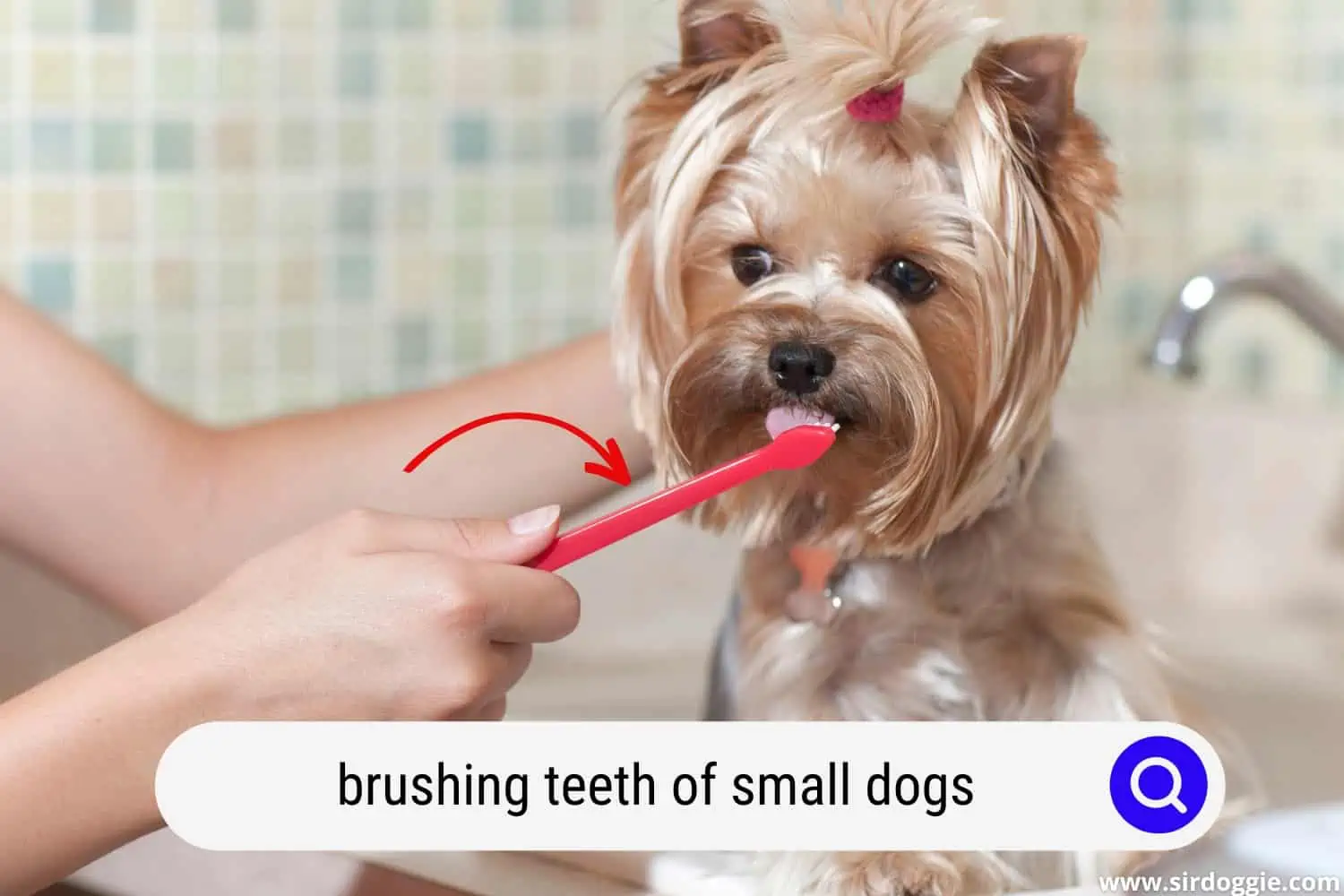
Tips When Cleaning a Small Dog’s Teeth
To make your teeth cleaning sessions safe and successful, Dade City Animal Clinic and Hill’s Pet recommend keeping the following things in mind.
- Keep the sessions short: If your dog is not used to having its teeth cleaned, short sessions are better because they give the dog time to get used to the change. It’s also unlikely that the dog will struggle with you if it only takes a short while.
- Choose a time when the dog is calm: It’s easier to clean your dog’s teeth when they’re not irritable
- Consider brushing front and back teeth in different sessions: This is especially important if your dog is struggling with you and having a difficult time settling down during the sessions.
- Make it a routine: Brush your dog’s teeth in the same place and at the same time. This way, they’ll expect what’s coming, and they’re less likely to resist.
- Never use human toothpaste: The ingredients may be toxic for your dog
- Always reward your dog after a brushing session: Rewarding good behavior reinforces the idea that getting their teeth cleaned is a good thing
- A baking soda and water combination is an excellent natural cleaner
- Body language is vital to your success: It’s better to sit on the floor beside your dog when brushing their teeth than towering in front of them. Standing over them may be perceived as a threat and may cause them to resist.
- Visit a professional vet for regular checkups: Cleaning your dog’s teeth at home is not enough. You need to visit a vet occasionally to ensure your dog’s oral health is in good condition. The vet will check for infections, broken teeth, periodontal disease, and other issues you may not notice on your own. In addition to this, the vet will deep clean your dog’s teeth and ensure the hard-to-reach areas are in tip-top condition as well.
How Often Should You Clean Your Dog’s Teeth?
Now that you know how to clean a small dog’s teeth, you’re probably wondering how often you should do it.
PetMD suggests doing it 2 to 3 times a week and scheduling professional dental cleaning once a year.
Do Dog Treats and Dog Food Really Clean Teeth?
Many dog treats and dog foods are marketed to pet parents as helping clean a dog’s teeth. And while they can help (to a degree) they should not be considered a substitute for regular dental care and cleanings.
They can help reduce plaque build-up by providing a material that rubs and/or scrapes against your dog’s teeth. And while this can certainly remove some plaque, it will not get into every nook and cranny.
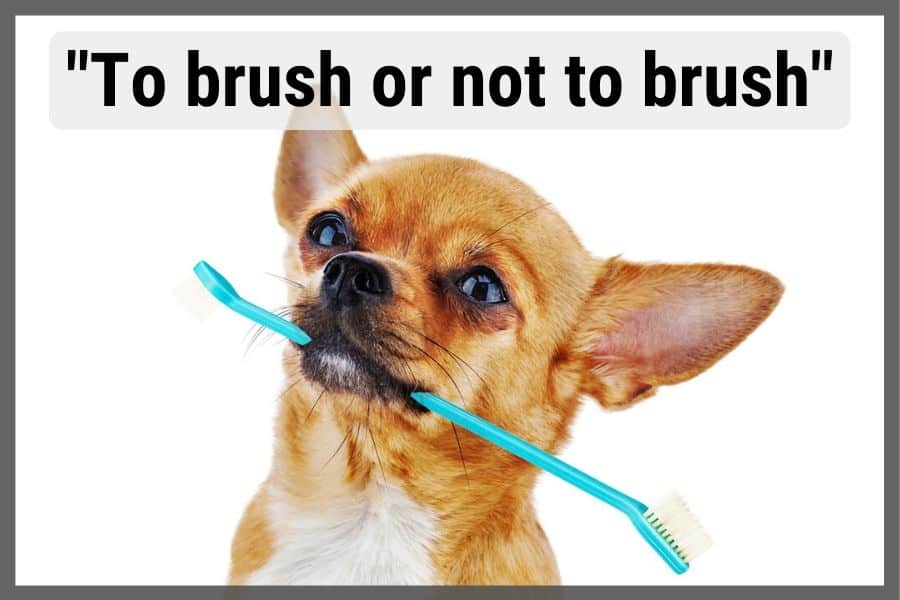
Continue Reading: Why Are Dogs’ Lips Bumpy? [ANSWERED]
Final Thoughts
If you were unsure of how to brush your small dog’s teeth before, now you can be confident that you will do it right!
To recap, get the right equipment, prepare your dog for teeth cleaning, and always use the correct position to reach all teeth. Don’t forget to seek professional help if you notice any abnormalities and for regular professional dental cleaning.
And remember, your dog may not be enthusiastic about their first teeth cleaning session or the next few. So be patient, keep them short, and keep going until he is used to it.

Family Dog Expert Author
Hi there! I’m Stuart, a devoted dog lover and family dog expert with over a decade of experience working with our furry companions. My passion for dogs drives me to share my knowledge and expertise, helping families build strong, loving bonds with their four-legged friends. When I’m not writing for SirDoggie, you’ll find me hiking, playing with my beautiful dog, or studying music.
